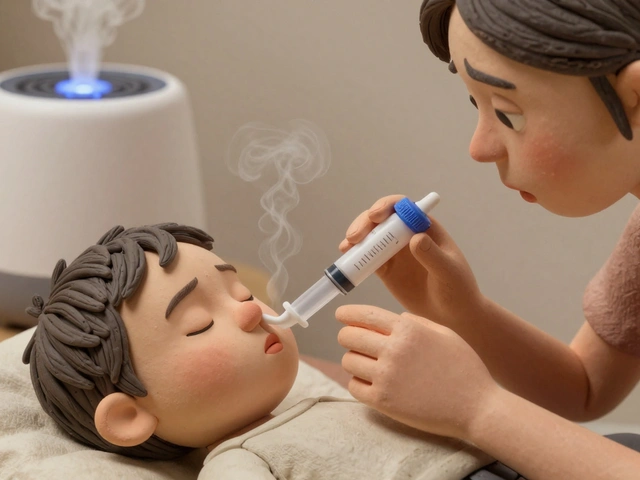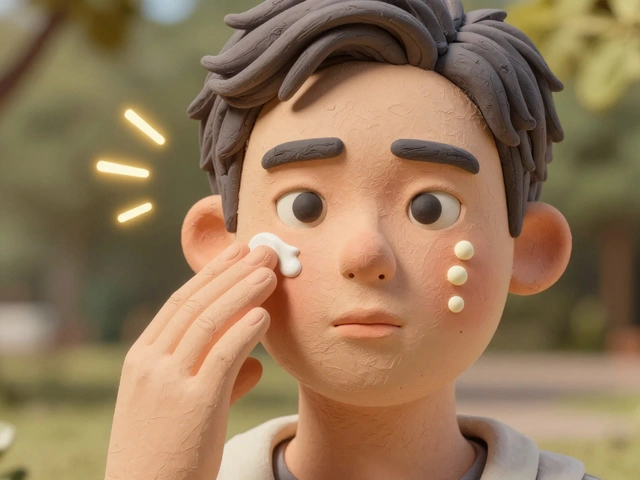As a blogger, I recently researched the connection between Legionnaire's Disease and humidifiers. I found out that Legionnaire's Disease is a severe type of pneumonia caused by Legionella bacteria, which can thrive in warm, stagnant water. Humidifiers can create the perfect environment for these bacteria to grow if not cleaned and maintained properly. This is particularly concerning for those with weakened immune systems, as they are more susceptible to the disease. To prevent the risk of Legionnaire's Disease, it's crucial to clean and disinfect humidifiers regularly, following the manufacturer's guidelines.
Humidifiers: How to Pick, Use, and Keep Them Clean
Humidifiers can fix dry air fast — better sleep, less itchy skin, and fewer nosebleeds. But a humidifier only helps when you pick the right type and keep it clean. This short guide tells you what to choose, how to set it up, and the simple cleaning steps that actually matter.
Pick the right type
Start by picking the right type. Cool-mist humidifiers (evaporative or ultrasonic) are best for homes with children and pets because they don't use heat. Warm-mist models boil water and make steam; they can feel cozy in cold rooms but use more energy and need careful placement. Ultrasonic units are quiet and use less power, but some models can leave white mineral dust if you use hard water. Look for one with a built-in humidistat so it stops when the room hits the target humidity.
Aim for 40–50% relative humidity. Below 40% air feels dry; above 50% you risk mold and dust mites. Use the humidistat or a separate hygrometer to check levels. Place the humidifier on a raised, water-resistant surface at least two feet from walls and furniture. Keep it away from electronics and avoid placing it directly on hardwood floors.
Cleaning and placement
Cleaning is where most people go wrong. Empty the tank and dry it every day. Once a week, clean with a mild bleach solution or white vinegar to remove scale and bacteria. Rinse thoroughly to avoid chemical residue. Replace filters as the manufacturer recommends. If you live in an area with hard water, use distilled or demineralized water to cut down on mineral buildup and white dust.
Noise and size matter. Small, portable units are fine for a bedroom. Larger console humidifiers work for living areas but are louder and need more maintenance. If you want ultra-quiet, choose ultrasonic models marked as silent or whisper mode. Check the runtime — some tanks last 8–12 hours while others need daily refills.
Watch for warning signs. A musty smell, visible mold, or condensation on windows means you're over-humidifying or not cleaning enough. If anyone develops worse allergies or coughing, stop using the unit and consult your doctor. People with asthma or mold allergies should check with their healthcare provider before regular use.
Extras to consider: models with timers, automatic shutoff, and easy-fill tanks make life simpler. Avoid adding essential oils or medication into the main tank unless the device is designed for that; oils can damage parts and spread particles you don’t want breathing in.
A good humidifier can make winter and dry climates much easier to live in. Pick the right type for your space, watch humidity levels, and clean regularly — those three steps keep the air comfortable and your device safe.
Replace filters and tanks on the schedule the maker lists. Cheap units can save money, but spend a bit more for models with easy cleaning and parts you can find later. Energy use is low for most humidifiers, but check annual costs if you run one all winter. Keep the manual—small tips there save time and warranty.





